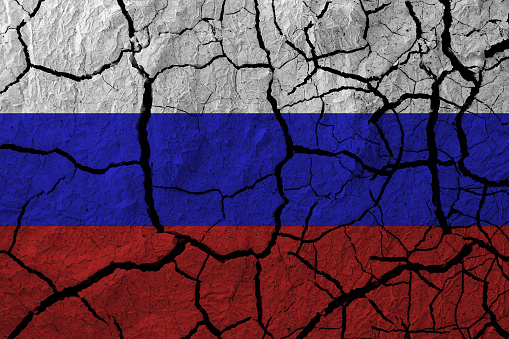The Economy of Russia
Russia’s economy relies on the extraction, processing, and export of various types of raw materials. Its financial system is well developed. In terms of size, it is also a very large country. The country’s regions vary sharply in their contribution to GDP. The oil-rich Tyumen’ province contributed 13 percent to GDP. By comparison, the city of Moscow contributed 20 percent. In total, 72 of Russia’s 87 jurisdictions contributed to GDP.
Russian economy is based on extraction, processing and export of various types of raw materials
Russia is an important supplier of a range of raw materials, such as coal, iron and steel. It is the world’s sixth largest producer of coal, with the second-largest reserves. It also produces 3.9% of the world’s steel. Its steel industry is one of the most profitable, and has been essential in bringing the economy back online after the fall of the Soviet Union. A new generation of capable managers has taken over the reins of many of the old companies and have modernized equipment to make their business globally competitive.
Russian industries are largely dependent on the extraction, processing and export of various types of minerals and raw materials. The country is a world leader in the production of oil and gas and has over 200 billion tons of coal reserves. The country’s main coal extraction area is the Kuznetsk coal basin. The country produced 385.4 million tons of coal in 2016.
The country receives a considerable amount of money from the export of gas and oil. In the first two months of the war, Russia earned $47 billion in energy sales to Europe. Fuel prices have increased in the West, so this revenue is growing. However, the number of gas exports to Europe has decreased sharply since the war.
While the Russian economy is gaining momentum, its prospects are not yet bright. It is unlikely that it will transition to a more capitalist economy anytime soon, as the country’s industrial output remains highly dependent on the extraction, processing and export of various types of raw materials. However, it remains to be seen whether Russia can break out of its grey economy.
It is a developed financial system
The Russian financial system is largely based on a banking sector. This sector conducts settlements, maintains deposits in client bank accounts, and transforms these funds into loans for the economy. Currently, Russia has 328 operating banks, including 225 with a universal licence and 103 with a basic licence. In addition, there are 34 non-bank financial institutions.
The Russian financial system has developed from the centralized system that was present in the Soviet Union to a two-tier system consisting of a central bank and commercial banks. This structure is common in market-based economies. In 1991, the Russian Central Bank assumed the functions of the Gosbank, which had been run by the Soviet government. In the Soviet system, the bank had been an arm of the government, and its policies were manipulated to favor certain sectors, such as the industrial sector and the agricultural sector.
Russia has a financial system that supports its trade and investment efforts. It is also a member of BRICS, and has actively promoted de-dollarization through the BRICS process. This is partly motivated by its rivalry with the United States. Russia’s deputy foreign minister, Sergei Ryabkov, has expressed concern with the dollar’s role as a settlement unit. The government has urged BRICS countries to cooperate and adopt alternative currencies.
The Russian financial system is still under threat from financial sanctions imposed by Western countries, including the US and UK. During the crisis in Crimea, Russia threatened to be cut off from SWIFT, which connects thousands of financial institutions around the world. The current sanctions are putting enormous pressure on the Russian economy and sending a signal that the international community opposes Russia.
It is a hybrid
A hybrid economy is one that draws on both domestic and external markets. The Russian economy is largely based on exports of oil, which is sold to Asia at discounts of up to $35 per barrel. While this might sound like a good thing, there are a few drawbacks to Russia’s economy. The first is that it doesn’t have access to the rich and deep capital markets of the West. In addition, Russia’s external debt is low, as it holds nearly $300 billion in foreign exchange reserves. This means that it is not likely to have a major financial crisis, but it also has a large amount of cash in the bank.
In 2014, Russia seized Crimea with the help of unregistered Russian soldiers. The goal of the Russian hybrid strategy was to undermine public confidence in the country’s foreign policy and target domestic discontent. The Russians also used economic means to gain control of Georgia’s political system, allowing them to manipulate public opinion and create instability.
In addition to the problems in the national economy, Russia is also facing rising prices. The country’s inflation rate is predicted to reach nearly 18% this year. Economists at the VEB estimate that this will lead to a contraction of the economy by about 0.4 percentage points by 2022. In addition, the country’s real disposable income is expected to fall by 9.2% this year. This is a sensitive topic given the high cost of living in Russia. Nevertheless, President Vladimir Putin has promised to improve real disposable incomes to counter rising prices.
It is a large country
Although Russia is the largest country in Eastern Europe, its economy is relatively small compared to other major world powers. According to the World Bank, its GDP is estimated to be $1.7 trillion in 2021, which is only 10% of the GDP of the European Union. This is equivalent to the combined output of Belgium and the Netherlands.
The economy of Russia is dominated by the primary sector, which provides employment for one-eighth of the country’s population. The remainder of the economy is comprised of three main sectors: agriculture, industry, and services. Agriculture accounts for about five percent of the country’s GDP, while industry accounts for about 26.8% of the total GDP. Overall, Russia ranks eleventh among countries in terms of GDP.
The economy of Russia is driven by its natural resources, which include oil and natural gas. Agriculture, forestry, fishing, and manufacturing are also important economic drivers. Russia ranks third in the world for oil production, which accounts for eleven percent of the world’s total production. Russia also ranks second in natural gas production.
For nearly a decade, Russia has pursued a more aggressive foreign policy. It has sought to regain influence in countries outside its immediate neighborhood. For example, Russia has sought to expand its influence in the Mediterranean region. Since this region is crucial for global shipping and trade, Russia has used various tools to expand its influence.
It is large
The Russian economy is large, but it lags behind China, the United States, Japan, Germany, India, France, South Korea, and the United Kingdom in terms of GDP per capita. Russia is only slightly ahead of Brazil, Mexico, Indonesia, and Spain. That’s despite a large population. By comparison, China’s economy is the second largest in the world, but it is still significantly smaller than the U.S.
A major issue for Russia’s economy is the fate of the real private sector. The virtual economy is threatening the national economy, but it also needs the private sector as a social safety valve. Regardless, dominance of the virtual economy is incompatible with a healthy, vibrant private sector. While small businesses will continue to exist, their market share will be constrained and they will no longer be able to sell goods to public sector customers.
Russia’s economy is also important for its energy and natural resources. It ranks third in the world in oil production, accounting for 11% of the world’s total production, and is a major player in natural gas production. Its economic size makes it an important geopolitical player and mid-sized player in global commerce. A disruption in this trade, as well as sanctions against Russia, could wreak havoc on nations dependent on Russian natural gas and oil.
While the impact of the war on Russia’s economy has been small, the impact of the escalating conflict in Ukraine has been large. Russian leaders have repeatedly declared the need to diversify their economy. However, the high prices of commodities like oil have tempered the impact of Western sanctions, as Russia is still the world’s second largest oil and gas exporter. As a result, Russia’s economy has been able to withstand the economic challenges of war and the sanctions in place in Ukraine.
It is innovative
The study of the development of Russia’s economy has led to some conclusions on the subject of whether or not Russia’s economy is innovative. An innovative economy is characterized by the presence of creative labor and innovation processes based on the intellectual resources of society. Such an economy emerges when certain conditions are met, such as the level of science and research, the state of society and its need for innovation, and the political system.
The government is trying to make Russia’s economy more innovative. It wants to improve its financial and human capital to boost the country’s scientific base and attract foreign specialists. However, the government faces many challenges. It must make decisions on how to increase investment in R&D and how to develop new technologies. It must also make some changes to the visa requirements for foreign experts.
The Russian economy is growing at a fast rate. National security is a primary concern in restructuring the national economy. In this context, innovation-oriented production should be the basis of the national economy. The development of strategic industries should be based on the use of modern technologies and the construction of modern systems.
The lack of internal funds is offset by the availability of bank loans. The government should also make public policies that will retain and attract the best minds. These policies should offer opportunities for people to improve their skills and apply them. Many young Russian entrepreneurs are already leaving Russia for Silicon Valley, so keeping them at home is important.



